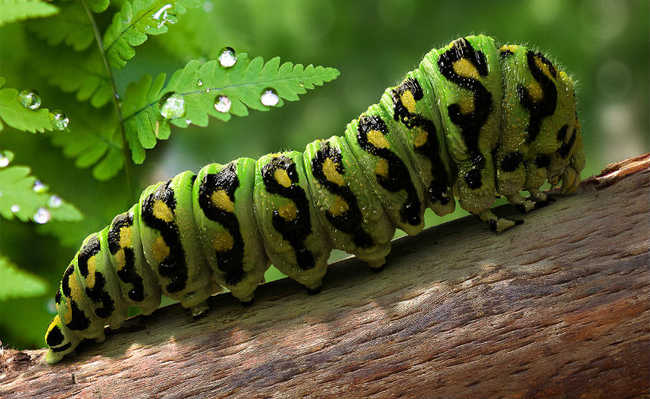Caterpillar Protein Can Help Fight Disease
Substances found in the "blood" of caterpillars have antiviral properties that can fight H1N1 flu, herpes and polio

"Do you know what is good for curing a cold"? This is probably one of the most common questions in the world and the answers (or theories) range from honey and herbal tea to the most absurd theses. Although it's a cliché, the popular saying is apt when it comes to a cold: from a doctor and a madman, everyone has a bit.
But it's supposed that as the cold evolves, theories must get more surprising, right? Well, in this case, the cold had to evolve a lot to reach the height of the result of this research carried out by the Butantan Institute, in São Paulo. According to the researchers, substances that are promising in combating several viruses have been found in caterpillars.
The team of virologist Ronaldo Zucatelli Mendonça found substances with high antiviral potency in caterpillars of the Megalopygidae family. “We still don't know the exact chemical composition of this substance,” he said. "However, it has already shown to have unequivocal action: it has made the replication of picornavirus (a relative of the polio virus) two thousand times smaller and 750 times smaller than that of the measles virus, in addition to having neutralized the H1N1 influenza virus."
Well, the key word for everything here is evolution. For example, H1N1 flu is a result of the combination of genetic segments from the human flu virus, the avian flu virus and the swine flu virus (understand more). In the case of the properties of substances found in caterpillars, the evolution of species appears as a very interesting premise, since more than half of all known animal species are insects that survived the hostility of the planet for 350 million years because of them. substances capable of fighting viruses, bacteria and fungi present in your hemolymph (the "blood" of insects).
Caterpillar blood has been studied for some time
It is not new that researchers look for antivirals in the blood of caterpillars. In 2012, a study published in the journal Antiviral Research showed research in which the team isolated and purified a protein in another caterpillar of the Saturniidae family, Lonomia obliqua. The protein found in Lonomia made herpes virus replication a million times smaller and rubella virus replication ten thousand times smaller.
According to FAPESP's website, "the two studies, on Lonomia and on caterpillars of the Megalopygidae family, focus on substances that have two specific properties: apoptotic and antiviral action. The first promotes apoptosis (programmed or triggered cell death to eliminate quickly, unnecessary or damaged cells), an important process in the cancer control mechanism. The current focus of research with Megalopygidae caterpillars is its antiviral action", that is, its effectiveness in inhibiting viral replication, affecting the normal functioning of the host cell.
Disgusting but Useful: Remedies and Treatments from Not-Very Nice Origins
If you thought it was just the caterpillars that owned a "miracle potion", you are wrong. In 2008, British scientists claimed to be developing an antibiotic from fly larvae that could treat severe forms of hospital infection.
Another interesting treatment, which does not involve any type of animal, is fecal transplantation. In early 2013, the Albert Einstein Hospital, in São Paulo, performed this procedure, hitherto unheard of in Brazil. As disgusting as it sounds, it is the only healing alternative for patients suffering from so-called pseudomembranous colitis, which causes persistent diarrhea that can lead to dehydration and even widespread infection.










